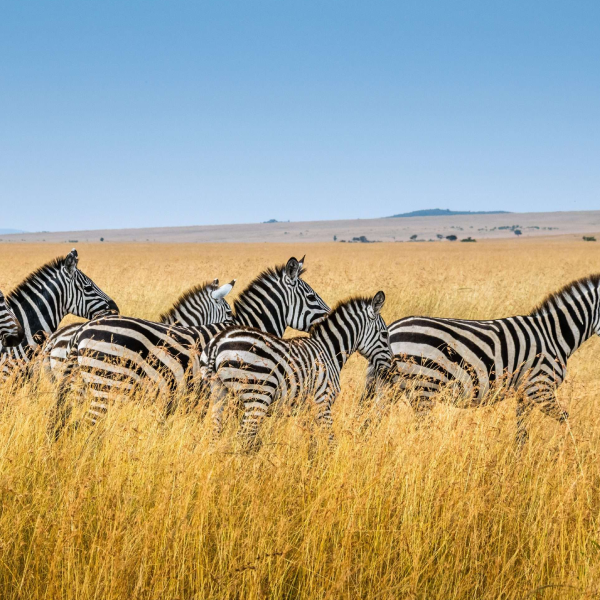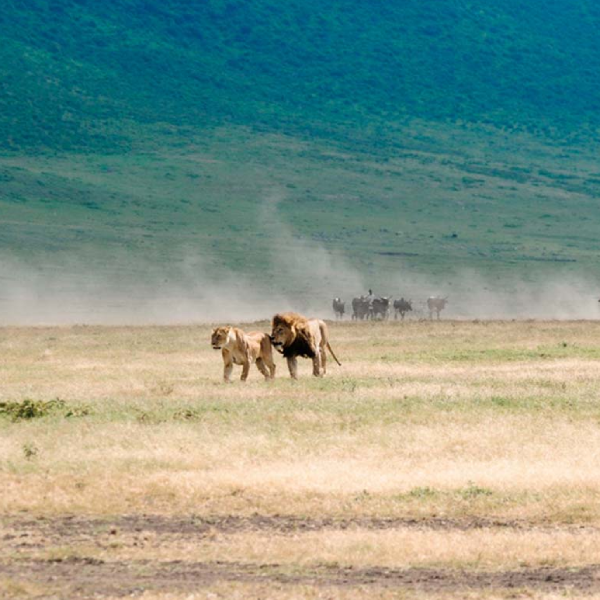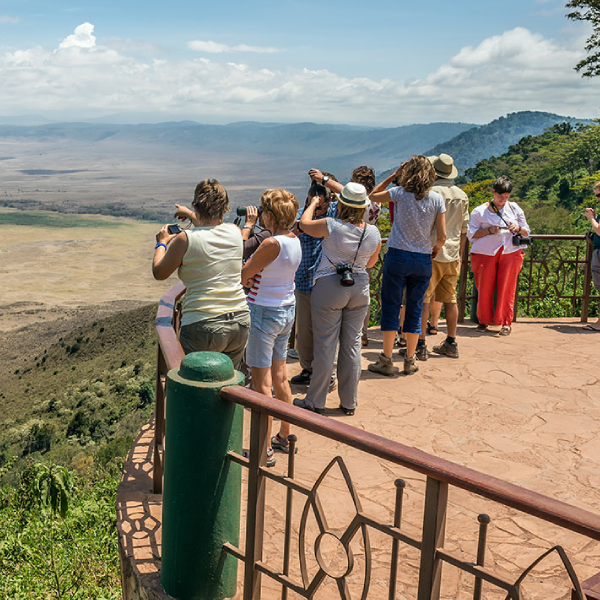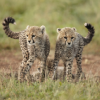Ngorongoro Crater, often referred to as the "Eighth Wonder of the World," is a UNESCO World Heritage Site located in northern Tanzania. This massive volcanic caldera, formed millions of years ago, is home to an extraordinary concentration of wildlife, including the Big Five (lion, leopard, elephant, buffalo, and rhinoceros). The crater floor is a lush, fertile haven for a variety of animals and bird species. Surrounded by steep cliffs, Ngorongoro offers stunning views, making it a must-visit destination for wildlife enthusiasts and photographers seeking an unforgettable Tanzania Safari experience.
Getting There
Ngorongoro Crater is located approximately 190 kilometers from Arusha. The park is accessible by road, and visitors can take a 4-hour drive from Arusha to the crater’s entrance. There are also daily flights to Lake Manyara Airport, which is about a 1.5-hour drive from the crater. The roads leading to the park are well-maintained, though a 4x4 vehicle is recommended, especially during the rainy season. Additionally, visitors can choose guided safari tours that provide transportation to and from the park, ensuring a seamless experience from start to finish.
What to Do
- Safari tours to observe the Big Five and other wildlife, such as wildebeests, zebras, and hyenas.
- Visit the Ngorongoro Conservation Centre to learn about the region’s history and conservation efforts.
- Take in the stunning panoramic views of the crater from the rim, perfect for photography.
- Enjoy birdwatching, with over 500 species, including flamingos on Lake Magadi.
- Visit the Olduvai Gorge, a nearby archaeological site known as the "Cradle of Mankind."
- Explore the Maasai villages in the area to experience their unique culture and traditions.
When to Go
The Best Time to Visit Ngorongoro Crater is during the dry season, which runs from June to October. During this period, wildlife is easier to spot as animals gather around the limited water sources, offering excellent safari opportunities. The weather is also more comfortable, with clear skies and moderate temperatures. However, the green season (November to March) is also a great time to visit for lush landscapes and fewer crowds, though some roads may be muddy and challenging. The rainy season (March to May) can hinder access to some areas but provides vibrant scenery.










